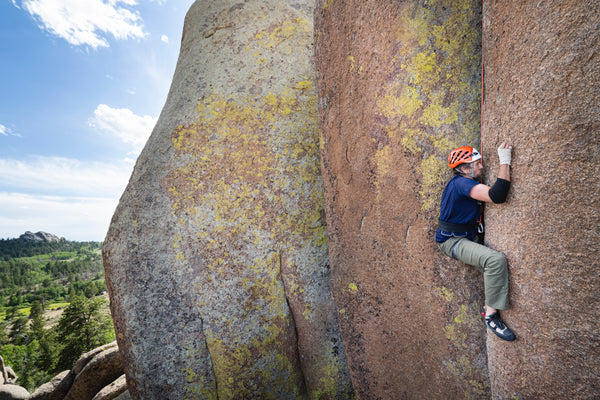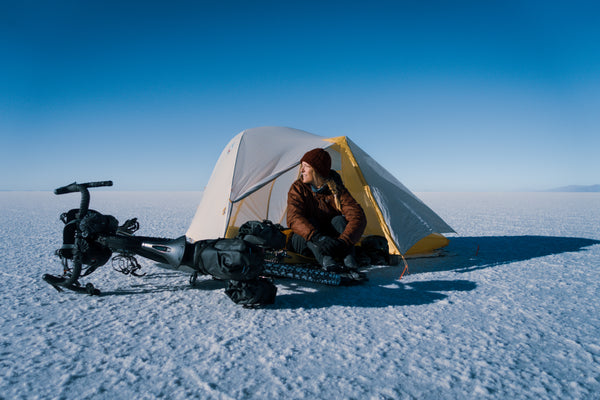A few days into my thru hike of the Appalachian Trail, I saw my first ultralight backpacker. He was tall and thin, and he wore a pack that was equally impressive. It was paper thin like it was stitched together using nothing more than gum wrappers. And it appeared to be more compact than the average highschool book bag. The hiker told me that he was planning on covering 30 miles that day. My jaw dropped. I felt a sense of envy in my bones. And then I rolled my eyes. Surely hiking that far with so little gear had to be dangerous. How could you possibly account for bacteria in the water, or torrential downfalls without carrying 30 or 40 pounds? I was certain we’d find him down the trail, hypothermic and unprepared for the brutality of the trail.
But as I continued hiking, I realized that I was the one who was underprepared. Sure, my 30 pound pack gave me peace of mind. But I couldn’t hike as fast while I was carrying all of that gear. It was just too much on my joints. I was soon to learn that ultralight backpacking – or backpacking with a bag that weighs 10 pounds or less without food and water, is the new norm. And you don’t have to make dangerous decisions in order to drop your pack weight into the ultralight category. But there are a number of pros and cons that come along with going ultralight.
The Ultralight Strength to Weight Ratio
When you look at gear that’s made out of Dyneema(R) (one of the most popular ultralight fabrics) for the first time, it’s easy to assume that this new, ultralight fabric is less durable than nylon. It usually comes with a waterproof coating, and it weighs about half as much as nylon, which should mean that it’s not quite as durable, right?
Wrong. Dyneema(R), is surprisingly strong for its weight. It’s both more abrasion and cut-resistant than nylon. In fact, it’s such an impressive material that it’s used to make bulletproof vests, vehicle armor, and ropes. There’s also a general misconception among backpackers that says “heavy duty” gear is going to be longer-lasting than ultralight gear. In some cases that may be true. But, surprisingly, just because a fabric is lightweight doesn’t mean that it’ll be less durable – Dyneema(R) demonstrates this fact. Opting for a lightweight backpacking setup may actually give your gear a greater lifespan.
Pro: Ultralight gear can be more durable than alternative options
The Cost of Going Ultralight
One of the biggest deterrents to going ultralight is the cost that’s associated with doing so. Generally speaking, extremely ultralight gear costs about twice as much as some of the heavier alternatives. For example, the Big Agnes Fly Creek HV UL2 Bikepack Tent costs about $449.95, it is made out of nylon and polyester, and it weighs 2 pounds and 10 ounces. The Dyneema(R) version of this tent costs about $999, and it weighs 1 pound and 7 ounces. But as ultralight backpacking gear is becoming more popular, it’s becoming easier to hit your ultralight goals without dropping a fat wad of cash on your gear.
Con: Ultralight gear is usually expensive
Pro: It’s becoming much easier to find ultralight gear in local gear shops

Backpacking Comfort
It probably doesn’t come as a surprise to most people to learn that carrying a heavy load has physical consequences. A heavy pack adds stress on your body’s joints and ligaments. And over the course of a long time, this can contribute to chronic issues like back pain. Ultralight backpacking may offer a solution to those who love the outdoors but don’t want to injure their bodies.
However, most ultralight backpacking gear is a little bit less comfortable than non-ultralight alternatives. This is because they often shave off non-essential items like pockets, padding, and frames. Ultralight gear comes in a lot of different shapes and sizes, so it’s possible to find gear options that allow you to meet that 10-pound threshold without severely compromising your comfort level. But it’s typically more challenging to find comfortable ultralight gear than it is to find comfortable non-ultralight items.
Pro: Ultralight gear puts less stress on your body
Con: Ultralight gear may be less comfortable than alternative options
My Ultralight System
I hiked the Colorado Trail with the Big Agnes Fly Creek HV UL1 tent, which is an ultralight, freestanding tent that is made out of nylon. Over the course of the trail, some of my companions dealt with issues like leaky seams and tent tears. One hiker explained that their tent was shredded by 50 mile per hour winds one night. I experienced the same 50 mph winds while using the Big Agnes, and didn’t experience a single issue (other than sleeplessness). The Big Agnes Fly Creek UL1 Tent is my go-to product even today. After thousands of miles of trail, it’s still in great condition, and it continues to impress me on the regular.
How to Go Ultralight
Over the years, I’ve found that the best way to set yourself up to attain that coveted 10 pound base weight is by focusing on your big four: your tent, backpack, sleeping bag, and sleeping pad. If you can keep these pieces of gear under 8 pounds, chances are that you’ll successfully create an ultralight setup. These are some of the market’s best ultralight backpacking items:
Big Agnes Fly Creek HV UL1: $399.95, 32 ounces
The Sun Dog 45L: $229.95, 45 ounces
Torchlight UL 20: $449.95, 36 ounces
Rapide SL Insulated Air Chamber Sleeping Pad: $149.95, REG 20"x72" 19 ounces
Total Cost: $1229.80
Total Weight: 132 ounces (8.25 pounds)
If you’re a first time backpacker, you don’t necessarily need to jump right into the lightest backpacking setup. It takes a while to figure out which gear is vital to your setup and which products you can leave behind. So, new backpackers tend to create secondary setups down the line anyways. But it never hurts to look for backpacking gear that supports joint health, and allows you to travel more comfortably on your journey.
About the author: Mary Beth Skylis is a seasoned backpacker and writer writing for Outside, Blue Ridge Outdoors, and a vast collection of other outlets. Check out Mary and her work here: https://www.instagram.com/h1kertrash/?hl=en


 English (EUR) | EN
English (EUR) | EN 


